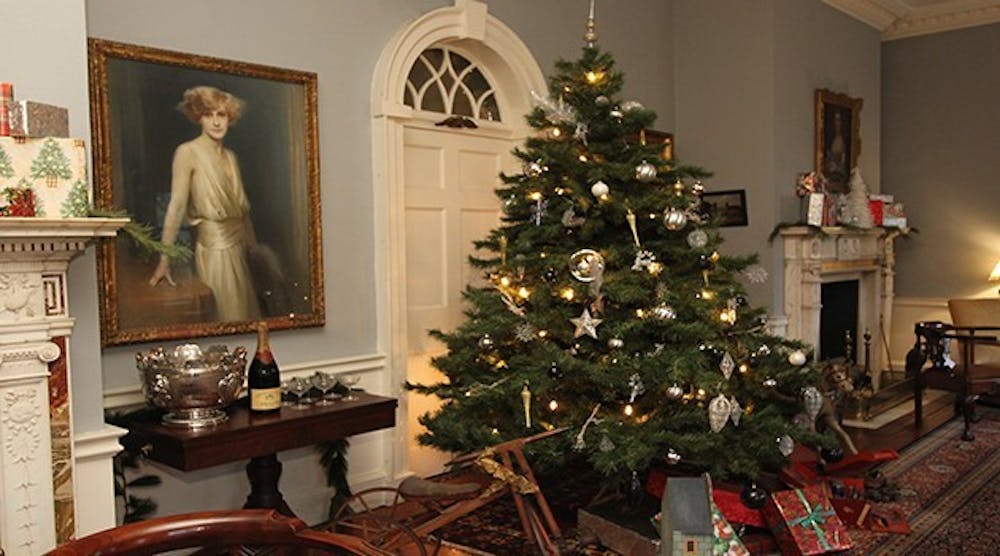Celebrate the Christmas season with Liberty Hall
Michael Dumaine l The Cougar’s Byte
As a part of Liberty Hall Museum’s Deck the Halls holiday season, a Christmas tour has been implemented into the regular museum tour schedule for the month of December. This tour is available to the public daily, running every hour from 10 a.m. to 4 p.m. Monday through Saturday.
The Christmas tours can be described as a holiday time machine that begins in the 1910s and travels throughout the 1950s. Five rooms are decorated accordingly to the given decade and represent what the Christmas season would have been like during this time period down to the smallest detail. Everything from the types of light bulbs on the tree to the popular culture Christmas references still known and celebrated today.

Christmas in the 1910s
Michael Dumaine l The Cougar’s Byte
Upon entering the tour, guests begin with the first room pertaining to the 1910s. This is the Edwardian era of the United Kingdom, and directly affects Christmas traditions here in the states. The tree in the first room is decorated with Edison incandescent light bulbs. These bulbs were hugely expensive and could only be lit for a short period of time due to fire cautions. The 1910s was a very prominent decade for the holiday season as it created many customs that are still used over 100 years later. The rise of ginger bread cookies and stocking hanging became popular culture and Clement C. Moore’s early 1800s poemThe Night Before Christmas was first published into a full story during this time period. Some speculate that the full story was partially written by a former descendant of the Livingston family, who had very close ties with the Kean family in the early 1900s.
After leaving the first room, guests were then instructed towards the remaining rooms that travel from the 1920s through the 1950s. Museum Educator Dan Conroy spoke about the roaring age of the 1920s and how the modern culture of the time stimulated the holiday season. “With the rise of art deco, Christmas decorations began to have the similar geometric shape that we see today, such as in snowflake decorum and ornaments that hang on the tree,” Conroy said. The room was vibrant with Christmas jazz music, peppermint and Christmas cards. The tree had smaller, more efficient light bulbs due to the rise in technology of the time.
The 1930s and 1940s were the time of the great depression and World War II, which definitely affected the holiday season. The rooms were very meek in comparison to the previous two, and had a sad overtone particularly during the 1930s. However, in this gloomy time a few traditions came to fruition that are still used today. Gift wrapping was new for the thirties, as well as Rudolph the Red-Nosed Reindeer’s first publication.

Christmas through the 1940s
Michael Dumaine l The Cougar’s Byte
The last room of the tour was 1950s themed. After a time of war-stricken culture, the 1950s began to rebuild and Christmas was once again overly joyous. As represented in the room by an overzealous amount of ornaments, the U.S. began to produce its own Christmas decorum instead of importing from Germany, which resulted in cheaper prices. Also displayed in the 1950s room, was a large amount of toys, food and music. The impression was that of partying and togetherness of the holiday season.
As previously stated, the Christmas tour runs 10 a.m. to 4 p.m. Monday through Saturday. Tour admission consists of $6 for children, $10 for adults and $8 for Kean University students.
Don’t miss out on a chance to visit Liberty Hall Museum, have a great time and gain knowledge of the history of the Christmas season.






